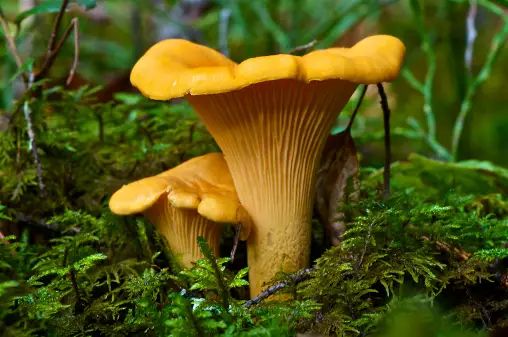Discover the truth about yellow mushrooms in your indoor plants – what they are, whether they harm your plants, and how to address them. Get insights on nurturing a healthier indoor garden in our informative guide.
Discovering yellow mushrooms in your indoor plants can be an unexpected and, at first glance, somewhat whimsical occurrence. However, it raises questions about the well-being of your plants, potential risks to your family and pets, and the underlying conditions that foster mushroom growth. In this article, we’ll delve into the world of the “yellow houseplant mushroom,” exploring its characteristics, potential harm, and how to address their presence in your indoor garden.
Unraveling the Mystery: What Type of Mushroom Are They?
The scientific name for these yellow mushrooms is Leucocoprinus birnbaumii, though they were once charmingly known as Lepiota lutea. These fungi have earned their reputation as “the yellow houseplant mushroom” due to their frequent appearance in indoor potted plants.
These mushrooms are typically small, sporting a cheerful lemon-yellow color that can fade as they mature. They stand at heights of 3cm to 8cm, with caps that start as bell-shaped and gradually open up to an oval shape, earning them the moniker “yellow parasol” or “flower pot parasol.” The cap surface is smooth but adorned with fine scales. While these are primarily a tropical species, they have found their way into indoor plants and greenhouses worldwide, making appearances throughout the year.
The Cap’s Transformation: An Aging Tale
As they mature, the caps of these yellow houseplant mushrooms change in both shape and color. They start as bright yellow with bell-shaped caps, fading to a pale yellow and eventually taking on a brownish hue. The caps open up to resemble wider parasols, adding to their intriguing appearance.
Do Yellow Houseplant Mushrooms Harm Indoor Plants?
The good news is that the presence of yellow houseplant mushrooms in your indoor plants is not an immediate cause for panic. These fungi are saprotrophic, meaning they feed on dead organic matter. In other words, they won’t harm your plant’s roots or healthy organic material. On the contrary, they break down organic matter into nutrients that can benefit your plants.
However, their presence serves as a warning sign that something might be amiss. The real threat to indoor plants lies in the conditions that encourage these mushrooms to grow. Keeping them away from children and pets is advisable.
Are Yellow Houseplant Mushrooms Toxic?
Yellow houseplant mushrooms are not considered edible, and their toxicity remains a topic of debate. Some sources suggest they may be non-toxic, while others claim they can cause an upset stomach or more severe reactions. To err on the side of caution, it’s best to avoid any experimentation.
Getting Rid of Yellow Mushrooms in Houseplants
If you wish to remove these mushrooms, you can do so by simply plucking them from the base of the stalk. However, complete eradication is challenging without repotting, which involves washing all soil off the roots. The spores of these mushrooms are resilient and can remain dormant for extended periods, awaiting the right conditions to sprout once more.
In reality, they may already be present in your potting mix, and they tend to spread easily. To discourage their growth, consider creating conditions that are less favorable for them while remaining beneficial for your plants. Shifting your plant to a location with better light and airflow can help the soil dry out faster, often leading to the disappearance of the mushrooms in a matter of hours.
When to Be Worried
While yellow houseplant mushrooms themselves pose no harm to your plants, their growth signals potentially problematic conditions. These fungi thrive in dark, warm, and moist environments with decomposing organic matter. These conditions can indicate root rot or other issues that can harm your indoor plants.
Additionally, the appearance of these mushrooms may signify the presence of decaying matter, such as your plant’s roots or the use of inappropriate potting soil. Pay attention to the specific requirements of your indoor plants and adjust their environment accordingly.
In Conclusion
The emergence of yellow houseplant mushrooms in your indoor plants may be a captivating sight, but it raises valid concerns about the health of your plants and the suitability of their environment. Understanding these fungi, their potential risks, and the conditions that support their growth is essential for maintaining a flourishing indoor garden. Addressing the underlying issues and creating a healthier environment for your plants can lead to a thriving indoor garden, minus the unexpected yellow visitors.
Table of Contents
Toggle

